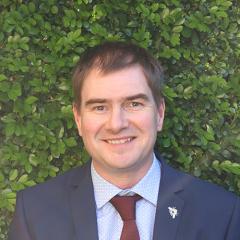Every time we drive, tiny particles called tyre wear particles (TWPs) are released as tyres rub against road surfaces. These particles are one of the largest sources of microplastic pollution in our environment. In Australia alone, it's estimated that around 20,000 tonnes of TWPs enter the environment each year; that’s about 0.9 kilograms per person. Tyres are made with a wide range of chemicals, known as tyre additive chemicals. These additives help improve tyre performance but can also be harmful if released into the environment. As tyres wear down, TWPs can carry these chemicals into the air, soil, and water. One chemical of particular concern is 6PPD, an antioxidant commonly used in tyres. When exposed to ozone, 6PPD transforms into 6PPD-quinone- a toxic compound that has been found to kill some salmonid species and has even been detected recently in human urine.
Despite growing global research, there is still limited information on the extent of tyre-related pollution in Australian environments. To address this, QAEHS and the Department of Environment, Tourism, Science and Innovation (DETSI) have partnered to investigate the presence of tyre wear particles (TWPs), tyre additive chemicals, and other microplastics in the Moreton Bay region, as well as to conduct a pilot study in Oxley Creek to explore how these pollutants behave in water and sediment.
Our work also includes studying balcony road dust to better understand potential human exposure in urban environments, particularly in areas near highways and major roads.
Together, these studies aim to build a clearer picture of how tyre wear particles and associated chemicals move through the environment, where they end up, and what risks they may pose to ecosystems and human health.
Community Outreach
- Mentored Year 9 and 10 students as part of the Wonder of Science program, inspiring interest in STEM through interactive learning and guided inquiry projects.
- Participated in regional outreach through a Mount Isa school visit, delivering science workshops and engaging with students and teachers to STEM and scientific thinking.
- Delivered workshops and activities designed to communicate complex STEM topics in an accessible and engaging way for school audiences.
Industry Placement
February - May 2024: Department of the Environment, Tourism, Science and Innovation (DETSI); assisted with field sampling and turtle collections.
Beale, D.J., Limpus, D., Sinclair, G., Bose, U., Bourne, N., Stockwell, S., Lettoof, D.C., Shah, R., Nguyen, T.V., Gonzalez-Astudillo, V. and Braun, C., 2024. Forever chemicals don't make hero mutant ninja turtles: Elevated PFAS levels linked to unusual scute development in newly emerged freshwater turtle hatchlings (Emydura macquarii macquarii) and a reduction in turtle populations. Science of the Total Environment, 956, p.176313.
Conference Abstracts
Kaur, S., Rauert, C. & Thomas, K.V. A comprehensive analysis of tyre additive chemicals in the Moreton Bay Catchment, SETAC Asia-Pacific 14th Biennial Meeting, China, 21-25 September 2024.
Kaur, S., Rauert, C. & Thomas, K.V. From tyres to tides: Investigating tyre additive chemicals in the Moreton Bay Catchment, Queensland, International Mass Spectrometry Conference 2024, Melbourne, Australia, 17-23 August 2024.
Kaur, S., Rauert, C. & Thomas, K. A comprehensive analysis of tyre additive chemicals in the Moreton Bay catchment, Queensland Mass Spectrometry Symposium, Brisbane, Australia, 9 February 2024.
Kaur, S., Rauert, C. & Thomas, K.V. Plastic in your garden? A study investigating microplastics and bioplastics in commercial & home-made composts, SETAC Australasia 2023, Townsville, Australia, 7-11 August 2023.
Kaur, S., Rauert, C. & Thomas, K.V. Road to contamination: Quantification and identification of tyre wear particles in balcony dust, SETAC Australasia 2023, Townsville, Australia, 7-11 August 2023.
Kaur, S., Rauert, C., Thomas, K. V. Quantification and identification of microplastics in compost using Pyrolysis GC-MS method. Queensland Mass Spectrometry Symposium, Brisbane, Australia,1 December-2 December 2022.
Research Outputs
Media
ABC Radio 612 Brisbane Interview (15 July 2024, 06:25 AM) – Featured in a discussion on tyre wear particles in balcony dust near major roads, calling for volunteers to contribute balcony dust samples for the investigation of tyre wear particles and tyre additive chemicals.
Awards and Prizes
- 2022 Queensland Mass Spectrometry Symposium (QMSS), Second place for Best Student Poster - Quantification and identification of microplastics in compost using Pyrolysis GC-MS method.
- 2024 Three Minute Thesis School of Pharmacy/QAEHS Competition, First prize for presentation on "The secret life of tyres: unveiling their hidden impact".
- 2024 Three Minute Thesis Health and Behavioural Sciences Faculty Competition, Finalist.
- 2024 SETAC Travel Grant ($2,350) for the Asia-Pacific Conference in Tianjin, China.



